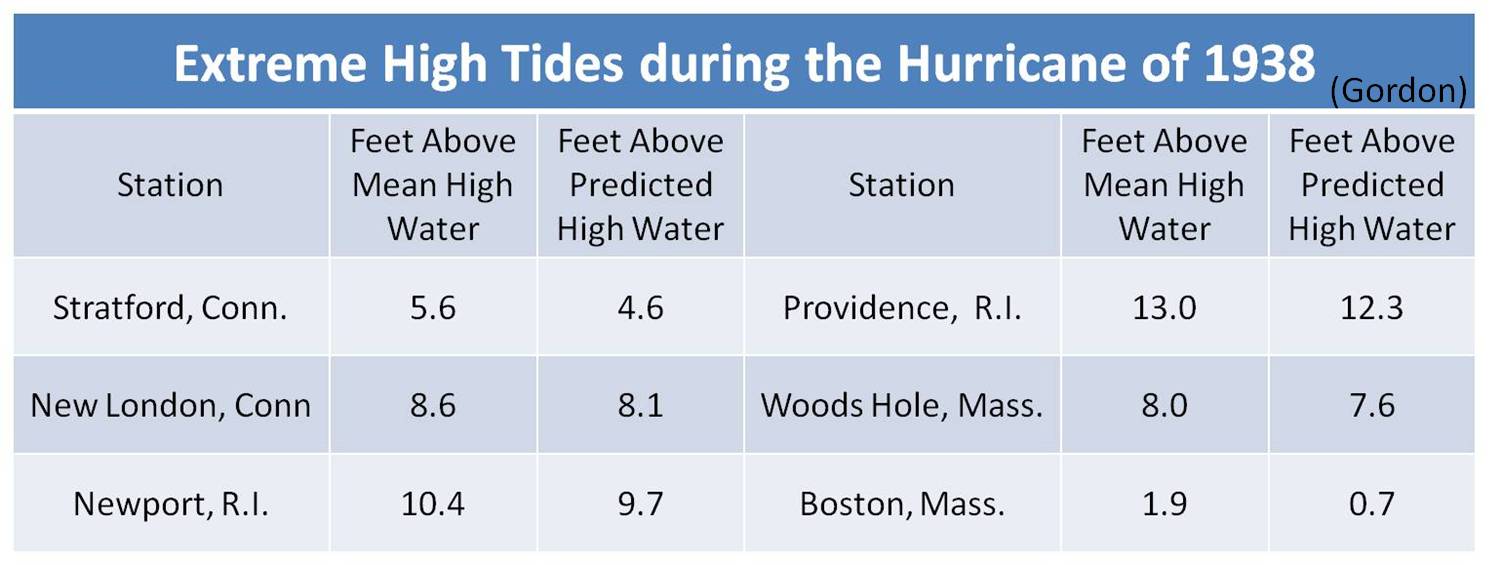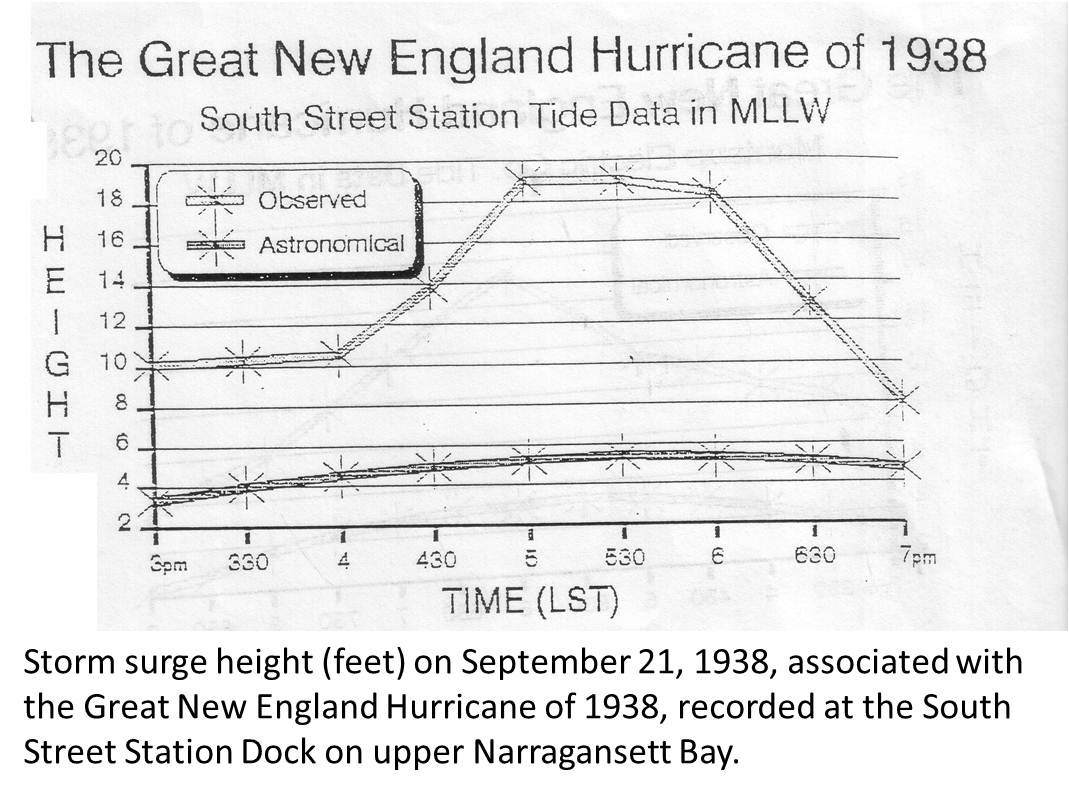When measuring storm surge in a hurricane in the Northern hemisphere, the highest surge values are on the right-side quadrants of a hurricane .that is traveling poleward. The highest storm surges produced by the Great Hurricane of 1938 are shown in the images below.
The referenced South Street Station dock is at 360 Eddy St. in Providence. What happened in Providence in 1938 is similar, from a phenomenon standpoint, to what happened t in Tampa Bay during Helene. There was no surge in Tampa Bay during Milton.
One would be hard-pressed to develop a scenario where a hurricane would generate a storm surge of 15 feet in Boston Harbor, or on any community facing Massachusetts Bay. Also a hurricane is not a Nor'easter, Sandy's storm surge along the east-facing shoreline of Massachusetts Bay was 2.5-4.5 feet. On the south coast of Massachusetts, Sandy's surge was 4-6 feet. While Sandy and historic nor'easters generated waves of 25 feet in Massachusetts Bay, Boston Harbor is not Scituate


